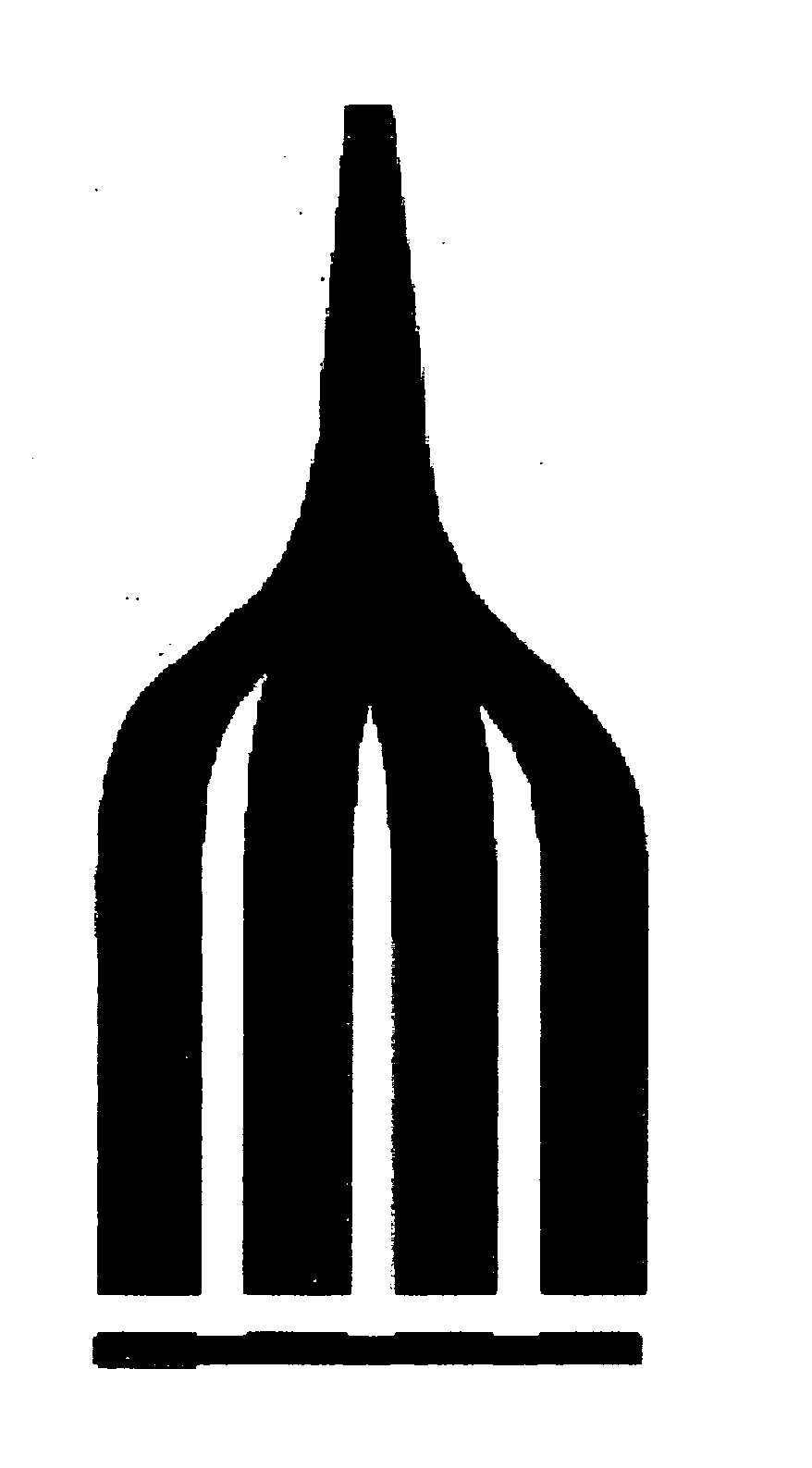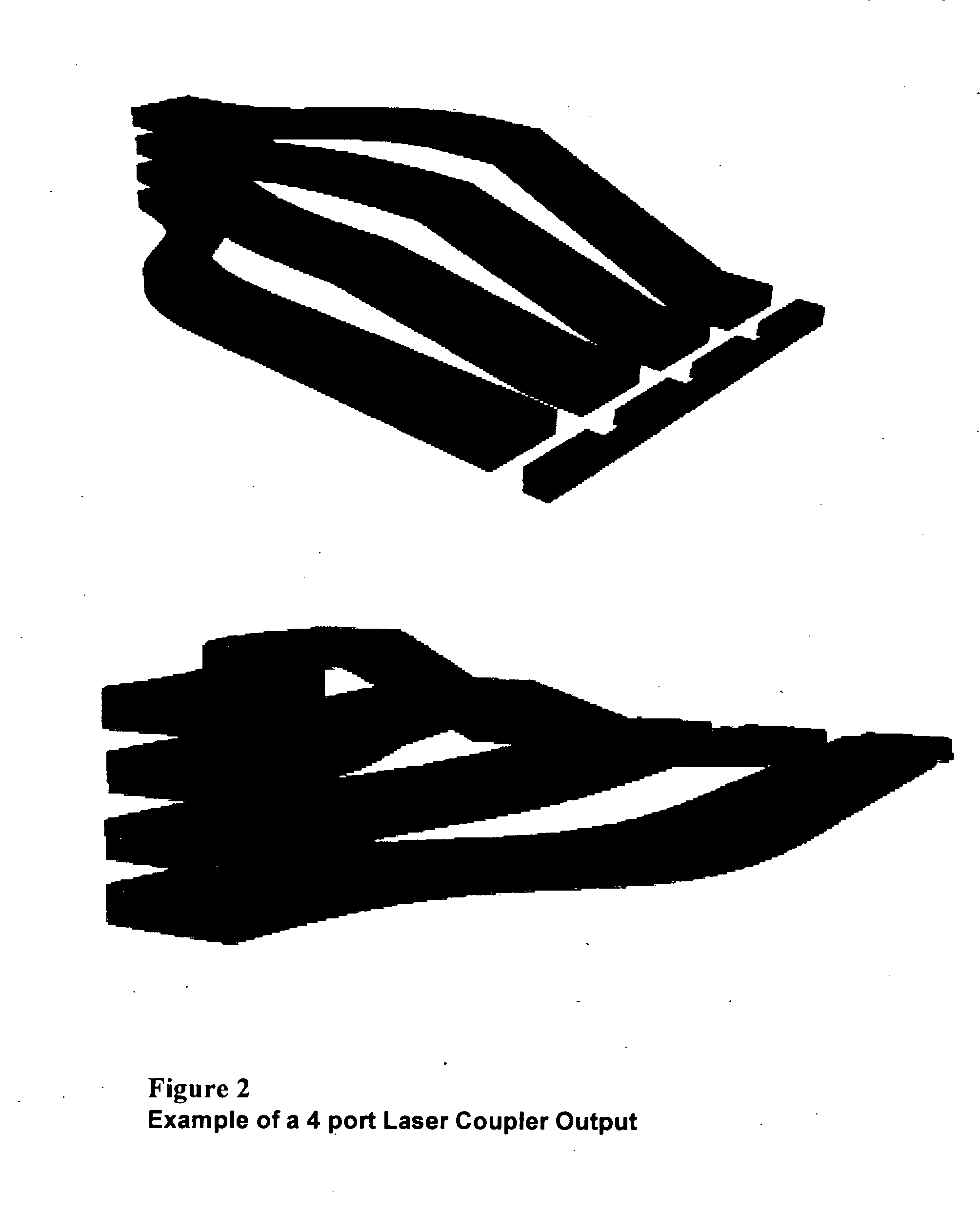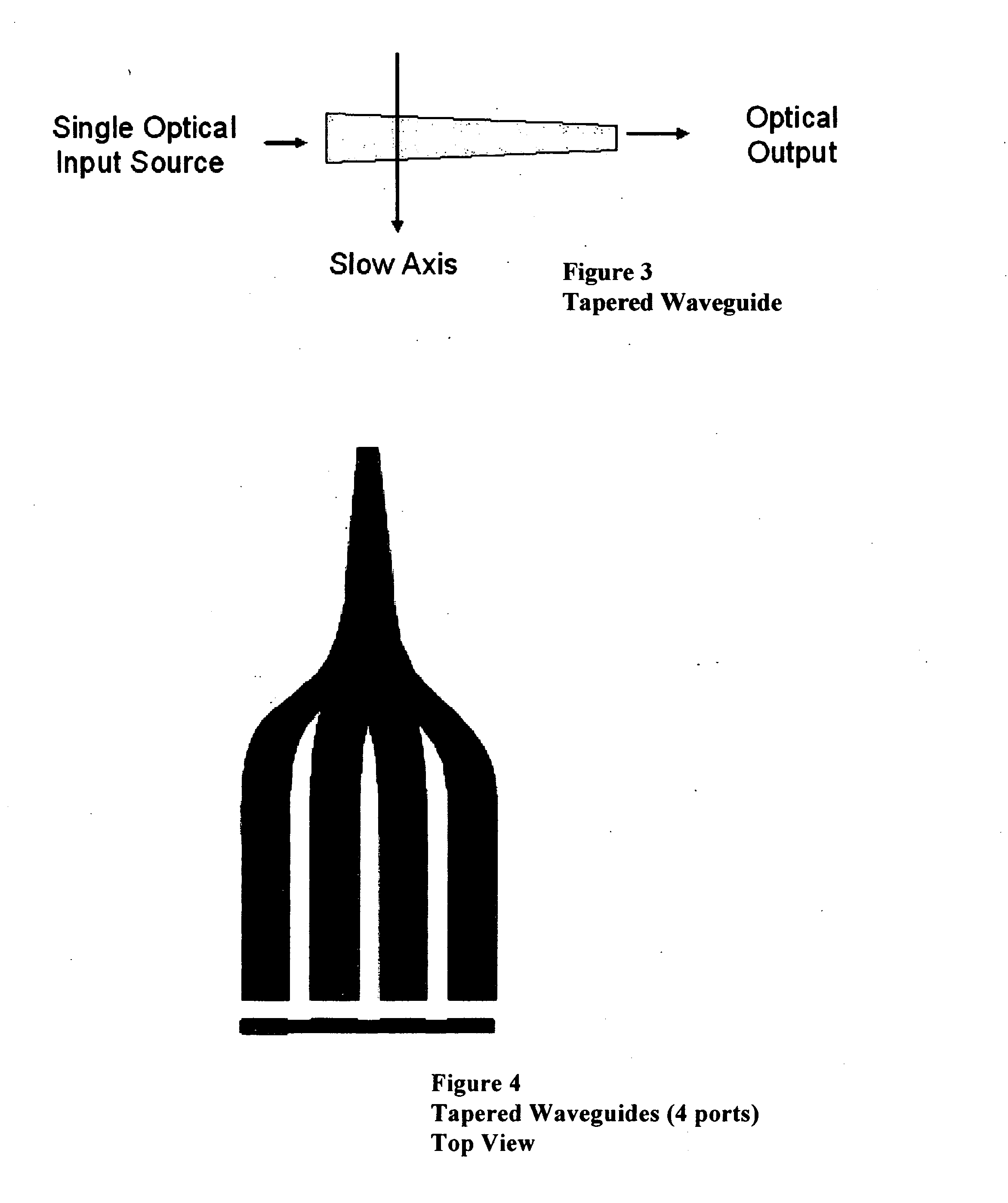Laser bar coupler with improved brightness
a laser coupler and brightness technology, applied in the field of optical devices, can solve the problems of difficult to reliably create solutions, difficult to effectively transform the lateral laser array into a single optical output, and often prohibitively expensive devices to manufacture, so as to achieve significant brightness increase, lower manufacturing cost, and high optical density
- Summary
- Abstract
- Description
- Claims
- Application Information
AI Technical Summary
Benefits of technology
Problems solved by technology
Method used
Image
Examples
Embodiment Construction
[0021] This invention takes the laser bar coupler shown in FIG. 1 and FIG. 2, and tapers (linear and / or non-linear) each waveguide in the slow axis. FIG. 3 illustrates a typical tapered waveguide section. This technique increases the divergence in the slow axis which has a negligible affect on performance as long as the slow axis increase is not more that the fast axis divergence.
[0022] A four port Laser Bar Coupler is shown in FIG. 4 and FIG. 5 with the taper modification. The tampering allows the waveguide packing density for a given fiber size to be increased. This is illustrated in FIG. 6. There can be M number of columns and N number of rows with this technique. [0023] The approach provides: [0024] Significant brightness increase [0025] Lower manufacturing cost [0026] Simpler design
[0027]FIG. 1 is a perspective view of the Laser Bar Coupler With Improved Brightness of the present invention showing a laser diode array coupled to an optical fiber having a rectangular cross-sect...
PUM
 Login to View More
Login to View More Abstract
Description
Claims
Application Information
 Login to View More
Login to View More - R&D
- Intellectual Property
- Life Sciences
- Materials
- Tech Scout
- Unparalleled Data Quality
- Higher Quality Content
- 60% Fewer Hallucinations
Browse by: Latest US Patents, China's latest patents, Technical Efficacy Thesaurus, Application Domain, Technology Topic, Popular Technical Reports.
© 2025 PatSnap. All rights reserved.Legal|Privacy policy|Modern Slavery Act Transparency Statement|Sitemap|About US| Contact US: help@patsnap.com



